A RAILROAD FOR PARK SLOPE’S 8TH ST. (1904)
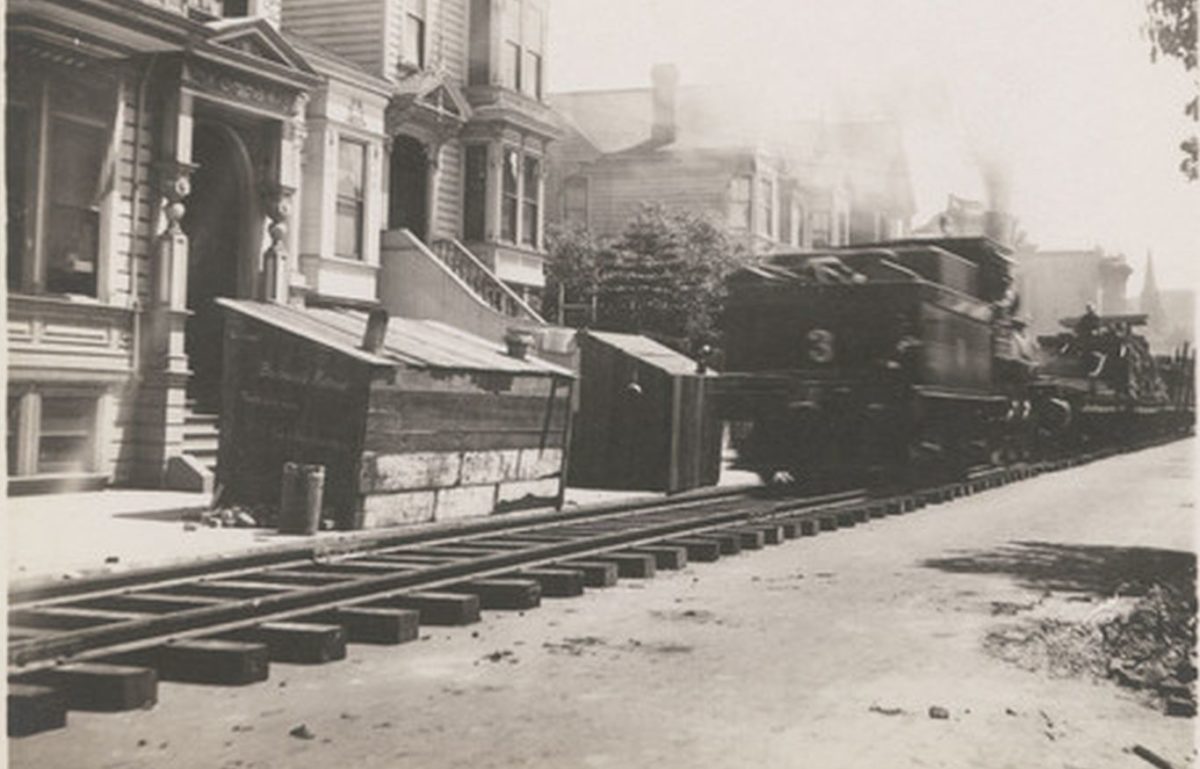
Brownstone Detectives investigates the history of our clients’ homes.
The story you are about to read was composed from research conducted in the course of one of those investigations.
Do you know the history of YOUR house?
********************************************************************************************************************************
Few of today’s Park Slope residents know about them.
In early February of 1904, however, they suddenly appeared on Eighth Street between Prospect Park West and Eighth Avenue, an industrial omen in a white shoe neighborhood.
These dark and foreign objects were a set of iron railroad tracks that had been – overnight – inserted coarsely into a place where they did not belong – residential suburbia.
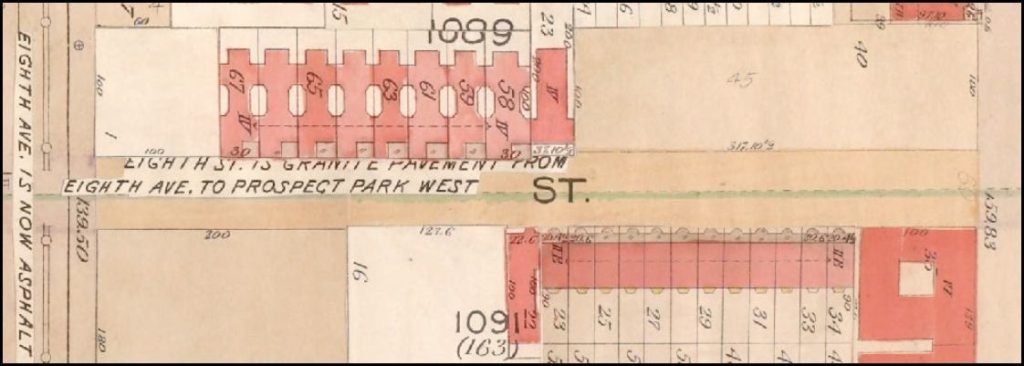
The block where these alien metals and wood had descended, had just barely been settled recently with homes (and even more recently with families).
It had just seen itself partially developed with a row of eight upscale apartment houses on the north side of the street and 12 two-story & basement limestone houses on its south.
With the recent spate of construction, there were – at the time the tracks appeared – a mere four families that had purchased “handsome houses” on the block, which they had taken possession of at “fancy prices.”
Now, those with an interest on the block were showing “great alarm.” With the appearance of the tracks, residents fully expected their properties to be “ruined in value,” causing them to begin considering selling them at a discount and to ignominiously leaving the neighborhood.
The builder of the limestones, Sen. William H. Reynolds, who was still hoping to sell the remaining eight buildings he had recently constructed, was no happier. In fact, he saw his investments as having lost the lion’s share of their value overnight.
The motley crew of builder and suburban landowners were all soon to make the most strenuous objections.
WHAT WAS THERE TO LOSE?
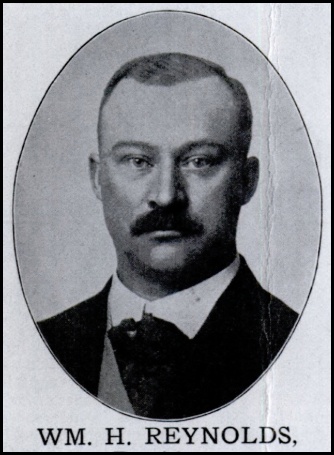
As the Brooklyn Rapid Transit Company (BRT) – formed just eight years earlier to acquire and consolidate railway lines in Brooklyn, Queens, and New York City – had gotten permission to lay the tracks in the street, it was at this firm that the the families – along with the builder – immediately focused their ire.
Their arguments were easy to understand.
For the families who had just purchased their grand mansions there, theirs would now be a neighborhood that would multiple times a day hail the loud clanging of a railroad bell, along with the insufferable belching of the engine’s smoke and, everywhere, its layers of charcoal dirt.
This was not to mention the scores of people every day traveling the rails, detraining on their street, and clogging their sidewalks. The residents’ image of their pristine upscale district would be at an end, accompanied by a steep decline in the value of their precious investments.
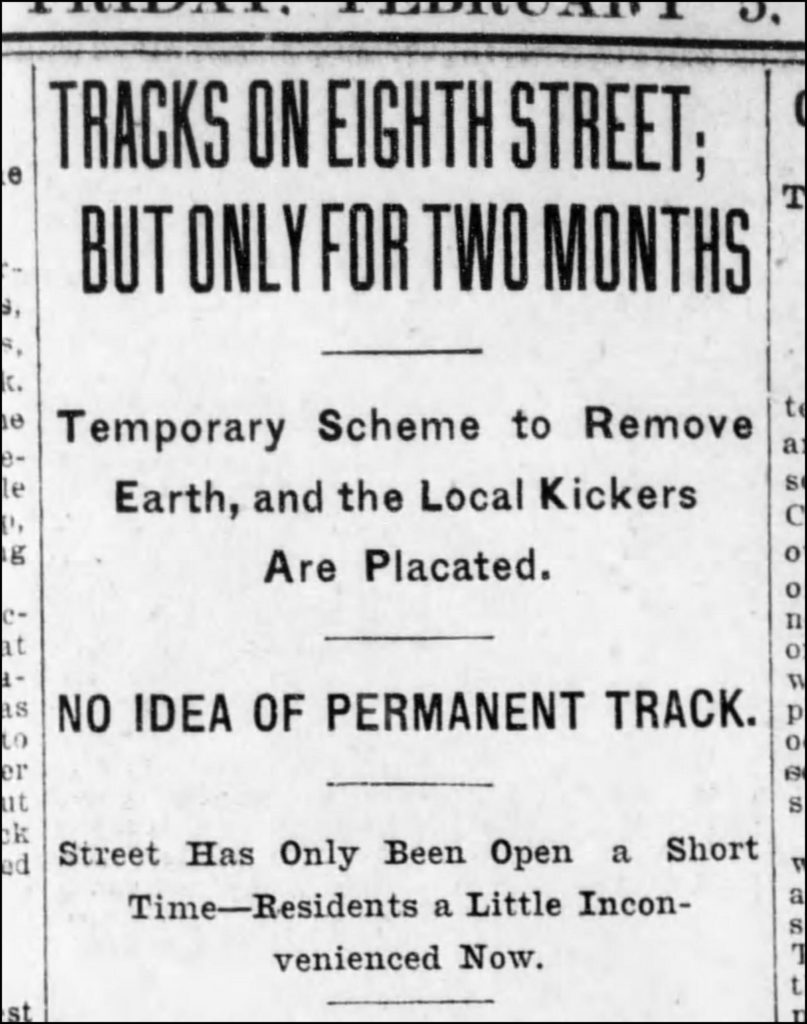
For builder Reynolds, it was possible that he was ruined. Having paid upwards of $1,500 for each of the dozen lots upon which he had built the same number of limestone houses, possibly at a cost of some $4-5,000 per property, now with the downgrading of the neighborhood and a railroad track being laid down the middle of the street, he may be lucky if he were able to convert each property to a multiple family dwelling and sell each at cost.
MOUNTAINS OF EARTH IN FRONT OF THEIR HOUSES
After meeting with the BRT, it was determined, to the great relief of owners and builder alike, that the tracks were being laid for a very unexpected purpose – and one that, while it may be a short term inconvenience, would be of benefit to them, as well.
As it was explained to them, the reason for the tracks was to provide railroad cars that could be “run through to take away the mounds of dirt on either side” of the street, which apparently were obstructing the continuance of “any further building operations” on the block.
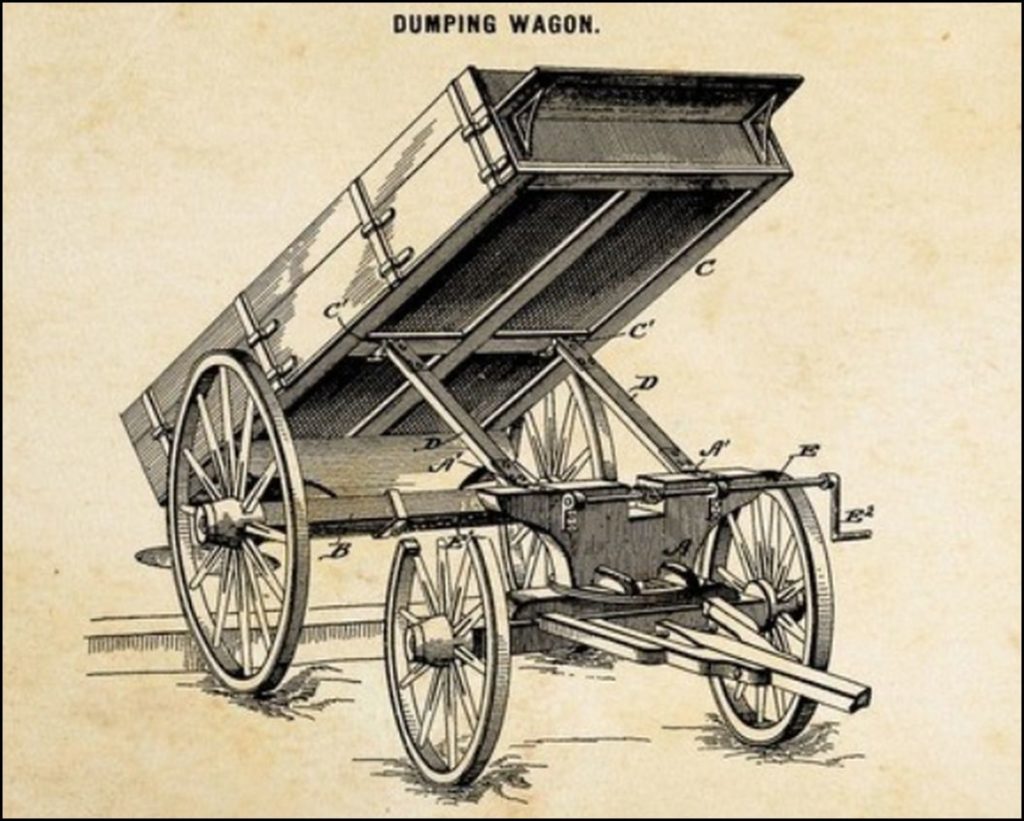
Apparently, the street had recently been opened and had cut through property that had been owned by one owner, but which was now the property of another. The mounds of dirt were evidently related to the digging, grading, and paving efforts that were connected to that opening. Now, it was the responsibility of that new owner to remove these mounds of dirt off of the street.
“How to do it,” though, became the next question.
The original intention had been “to cart away the vast amount of dirt in the usual way with contractors carts,” noted the Brooklyn Daily Eagle. The complaint was, however, that “they had no place to dump it.”
Thus, the BRT received permission to put the tracks in and take the roughly 50,000 cubic yards of earth to the Coney Island swamps. They promised that the tracks would be gone within two months.
THE VOCAL WOMEN OF 8TH STREET
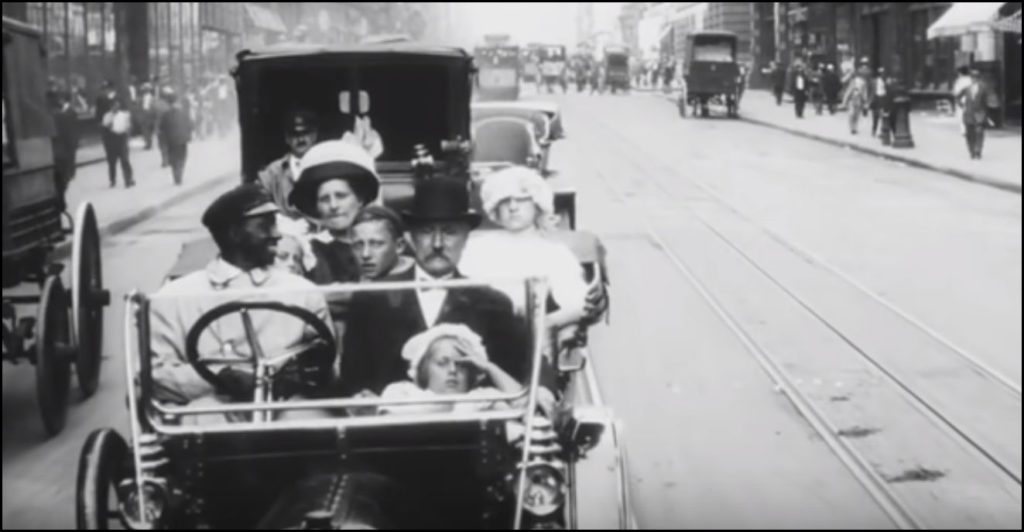
The families living on the block were unanimous in their objections to the track existing within the bed of the street, as well as the diminished conditions in which it appeared.
There were many inconveniences it caused, such as in getting coal, for instance, into the houses. The street was also virtually impassable, and so no wagons could enter the block, their having to remain on Prospect Park West.
The four families then on the block, were: Mrs. F. Lochowicz, at No. 548 Eighth street, who objected to the pole that was erected right in front of her house; Mrs. S. A. Osborn in 534 Eighth Street; A. J. Millikin, of 536 Eighth Street; and a family in 538, who spoke freely, but declined to give their name.
But it was agreed all around that so long as the “mountains of earth in front of their houses” were removed – along with the tracks at the end of two months – everyone was willing to suffer through the temporary inconveniences.
———————————————————————————————————————–
 Brownstone Detectives is an historic property research agency. Our mission is to document and save the histories of our clients’ homes. From our research, we produce our celebrated House History Books and House History Reports. Contact us today to begin discovering the history of your home.
Brownstone Detectives is an historic property research agency. Our mission is to document and save the histories of our clients’ homes. From our research, we produce our celebrated House History Books and House History Reports. Contact us today to begin discovering the history of your home.